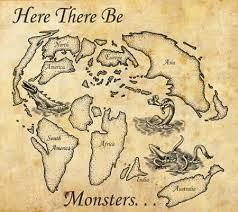Last week I performed in one of the High Schools in the area. The school originally booked me in for the ninth grade, but discovered some extra cash. They asked if they could use it for a special show with a small group of students. They gave my husband the acronym they use to describe this group, but nothing else.
When I arrived, I asked about this small group. I was told that they are a group of kids with behavioral issues. They have trouble sitting in class, they are easily upset, they tend to get into hassles with the teachers, they are all having academic challenges.
One of the administrators who was showing me around informed me that she had one of these students last year and he was getting a 98 in her class, but 32s in all of the other classes. She knows these kids are smart, but nobody knows how to reach them. Most teachers don't want to deal with them and they end up in ISS (Inner School Suspension), the main office, or out in the hall. They never stay in class long enough to learn anything. They also tend to get in trouble with other students who goad them into losing their temper, something many of them are prone to do.
So, they begin to file in. Almost all of them are either African American or Hispanic. These kids slumped into the room, took a seat and immediately busied themselves with something other than looking at me despite the fact that their chairs were all turned towards me.
This was a mixed group of kids from ninth to eleventh grade. Once most of them were assembled, I began asking them questions about what they liked to do. They mostly enjoyed sports and art. Nobody offered up an academic subject. I pointed this out, and one of the kids told me that he didn't do school well.
The teacher came in late, and brought a kid who slumped in, tried to sit in the seat next to mine instead of in front of me. I made him sit in the front, he slumped in his seat, and tried very hard to hide. He slouched all the way down, tried covering his face with his hands or pretending to sleep. All of the behavior which usually earns him a trip to ISS or at least makes someone send him out of the room. I ignored him.
 |
| This is the posture in question. |
I told The Sugar Incident . The kids had a great time, laughing, engaging with me and each other during the tale, and responding appropriately and with enthusiasm. The student in the front was upset, not because he didn't like the story, but because every now and then he would catch himself in a very vulnerable moment with his hands in his lap, staring at me with eyes as wide as plates. He'd realize I'd caught him, slump down, fold his arms, and try to pretend he wasn't listening. The most amusing point was where he put his hood up and covered his face with his hands only to peek through his fingers at me. If I caught him, he'd close his fingers. It was kind of funny.
When the story was over, he raised his hand and said he had to go and get his books. I let him go. He had a moment of surprise, as if he expected a fight. I have no dog in this game, so I didn't care. He slumped out of the room. The administrators didn't stop him, so I figured it was all right.
"Where is he going?" One of the kids asked.
"Not sure." I told them. "Not my problem." They all started laughing.
Another kid said, "Would you tell us another story?"
I said, "Sure." I told The West Indies. They loved it. I ended that story with, "My father, who has been trained to kill you in fifty different ways, could have made any choice that day, but he chose to make us all laugh, and because of it, we are all still alive, and everyone in that situation was okay. He did this in many instances in our lives. He showed us that violence and fighting rarely solve anything."
The kids looked thoughtful, they nodded, and applauded at the end. Maybe I reached someone, maybe they will remember that story in the future. Don't know, but it was obvious that tale had an impact on them.
After my small audience filed out of the room, their teacher leaned in and whispered "You kept their attention. They were engaged, and they asked for another story. That was phenomenal."
I said, "Thank you."
"Hey," he said, "that's not an easy thing to do with this group, I just wanted you to know that it was spectacular." Then he left.
After they were gone, the administrator who had just heard him say this to me started laughing. She said, "When he found out that I'd booked a forty five minute storytelling session with his class, he was really upset. He told me they'd never sit that long. They were incapable. He told me that thirty minutes would be pushing it because they didn't have the attention span to focus on anything that long."
Andrew Biemiller, an educator says that we know the things that work with reaching students, but we don't have the kinds of schools we need to implement the processes that help students learn.
All of the kids in that small group could probably be taught in such a way that they would be successful. They were engaged. They asked great questions. They learned about people who lived differently and have different challenges, while also watching the world unfold in a way that was familiar.
Stories are a way to address students who have a learning style that is not conducive to main stream teaching. The teacher in my small group expected to have to intervene and ride herd on his students, instead, he saw a side of them he didn't even know existed.
I've done this long enough to expect nothing less. I've seen how stories can impact students no matter where they reside on the learning or behavior spectrum. We all have.
How many times have we heard the phrase, "They'll never sit that long?"
 |
| And how many times have we seen this instead. |
If you find out where they are, meet them there, and create common ground, not only will they sit, you can take them anywhere!
Happy Telling!



















